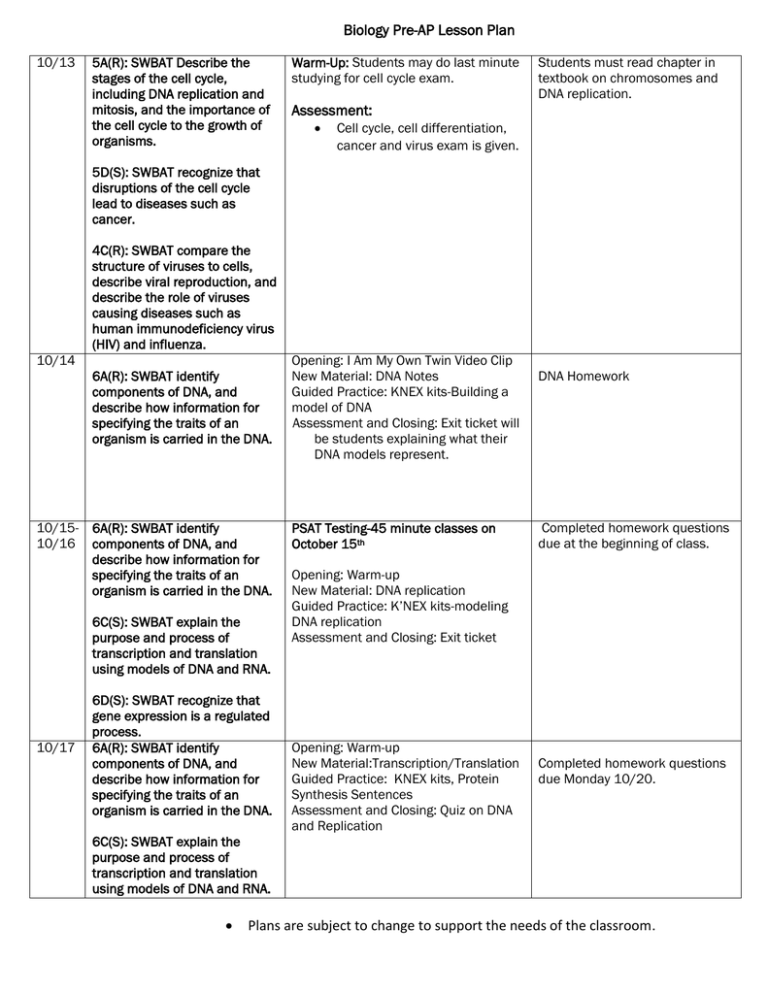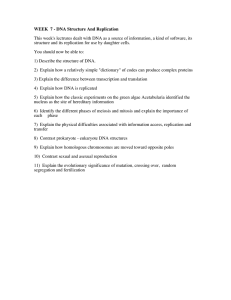PreAP Lesson Plan 10/13-10/17
advertisement

Biology Pre-AP Lesson Plan 10/13 5A(R): SWBAT Describe the stages of the cell cycle, including DNA replication and mitosis, and the importance of the cell cycle to the growth of organisms. Warm-Up: Students may do last minute studying for cell cycle exam. Students must read chapter in textbook on chromosomes and DNA replication. Assessment: Cell cycle, cell differentiation, cancer and virus exam is given. 5D(S): SWBAT recognize that disruptions of the cell cycle lead to diseases such as cancer. 4C(R): SWBAT compare the structure of viruses to cells, describe viral reproduction, and describe the role of viruses causing diseases such as human immunodeficiency virus (HIV) and influenza. 10/14 6A(R): SWBAT identify components of DNA, and describe how information for specifying the traits of an organism is carried in the DNA. 10/15- 6A(R): SWBAT identify 10/16 components of DNA, and describe how information for specifying the traits of an organism is carried in the DNA. 6C(S): SWBAT explain the purpose and process of transcription and translation using models of DNA and RNA. 10/17 6D(S): SWBAT recognize that gene expression is a regulated process. 6A(R): SWBAT identify components of DNA, and describe how information for specifying the traits of an organism is carried in the DNA. Opening: I Am My Own Twin Video Clip New Material: DNA Notes Guided Practice: KNEX kits-Building a model of DNA Assessment and Closing: Exit ticket will be students explaining what their DNA models represent. PSAT Testing-45 minute classes on October 15th DNA Homework Completed homework questions due at the beginning of class. Opening: Warm-up New Material: DNA replication Guided Practice: K’NEX kits-modeling DNA replication Assessment and Closing: Exit ticket Opening: Warm-up New Material:Transcription/Translation Guided Practice: KNEX kits, Protein Synthesis Sentences Assessment and Closing: Quiz on DNA and Replication Completed homework questions due Monday 10/20. 6C(S): SWBAT explain the purpose and process of transcription and translation using models of DNA and RNA. Plans are subject to change to support the needs of the classroom.



